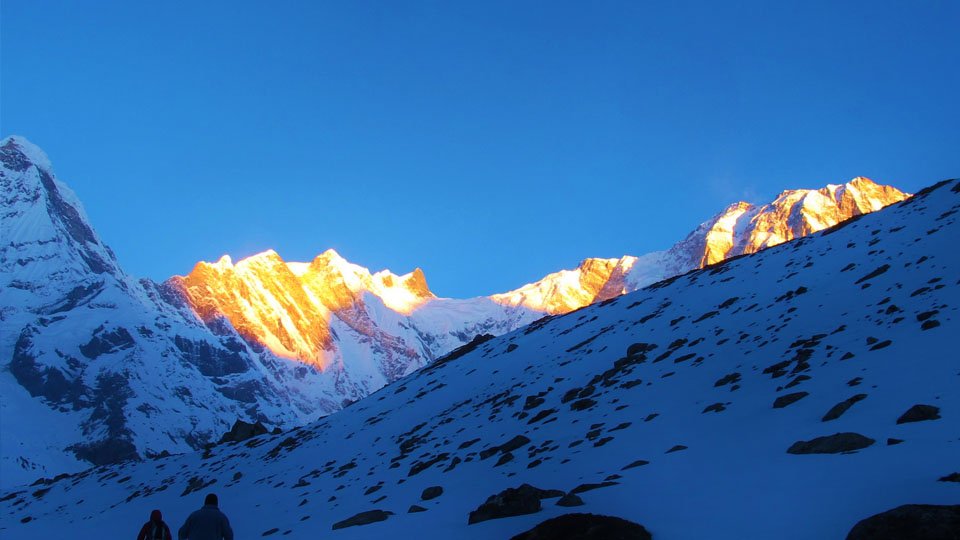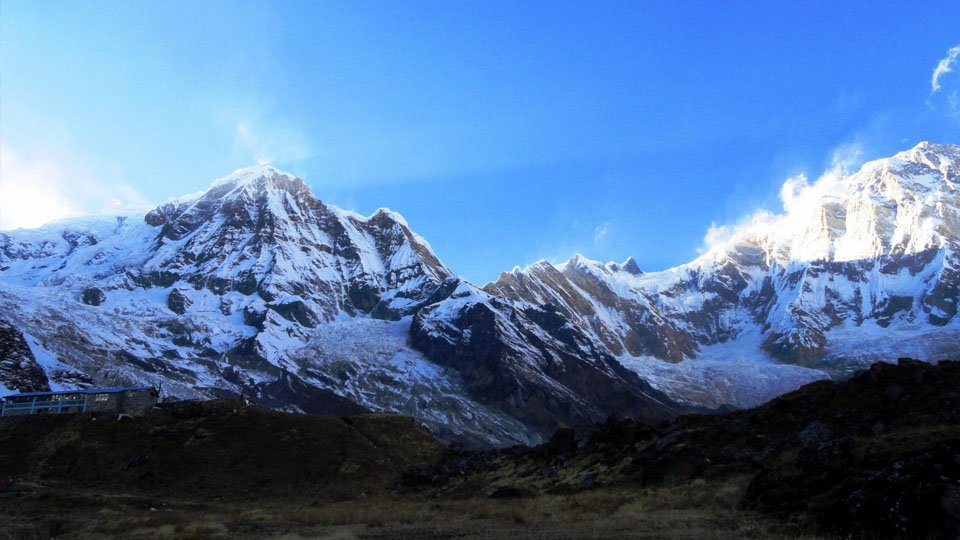Short Annapurna Base Camp Trek is 7 days trekking package to ABC starts & ends at Pokhara. This Short trekking package to Annapurna Base Camp is perfect to visit the Annapurna Base camp. This Short ABC Trek offers enough time to witness the very beautiful peaks of all the Annapurna giants that encircle the basin: Annapurna 1 (8091m), Annapurna South (7273m), the Glacier Dome, Gangapurna (7454m), the unclimbed Fang (7647m), and the fishtail peak of Machhapuchhre (6997m).
The short Annapurna base camp trek also give assurances to you fun, pleasure and a wonderful insight into the natural and cultural heritage of the tiny Himalayan country, Nepal. It is one of the most gorgeous treks passing through the diverse ethnic group’s culture and verifies vegetation forest and wildlife.
Highlights of Short Annapurna Base Camp Trek
- Short and adventurous walks at the foot of world’s tenth highest Mt. Annapurna
- From low and warm areas to cool alpine hills and ending at arctic zone of ice and glaciers
- Amazing forest covered in rhododendron-magnolia trees with magnificent views
- Exploring traditional Gurung villages of immense culture with age old heritage
- Mind blowing panorama of mountains within beautiful and scenic Annapurna Sanctuary
Overview
Annapurna Base Camp short trek is one of the popular trekking package to visit the famous ABC trekking route without going to Poon Hill. The Short Annapurna Base Camp Trek starts from Nayapul which is approximately 1 hour 30 minutes’ drive from Pokhara. You feel drenched by nature and unidentifiable calm in the heart and soul. The main part of Ghandruk Valley is; it lies on the top of the elevation, more than 5000m above sea level. Very massive rhododendron forests and fine terrace goes passing through our trail to the Chhomrong village.
The short trekking to Annapurna starts and ends at Pokhara. Annapurna Base Camp is another heavenly trail with amazing mountain views including Himchuli, Gangapurna, and the ever-changing Machhapuchhare, which sheer triangular face takes on yet another aspect here. The Short Annapurna Base Camp Trekking trail finally stumbles across moraines and reaches the world of ice and snow Annapurna sanctuary from where you will fascinated incredible 360-degree views of the Annapurna ranges and above the massive Annapurna glacier. Collecting lifetime experience, we review from Annapurna Base camp to Chomrong and then to the Jhinu Danda where you can enjoy the natural hot spring of small bath pools. After that, the trail leads to a beautiful rhododendron forest and passes to Pothana and Tolkha through appealing villages of Nepal’s ethnic communities of the Gurung, & Magar. This amazing Short Annapurna Base Camp trek finishes at Phedi from where we take a short drive to Pokhara.
Outline Itinerary
| Day | Program | Elevation |
|---|---|---|
| 1 | Pokhara to Jhinu Danda via Nayapul | |
| 2 | Jhinu Danda to Bamboo, | |
| 3 | Bamboo to Deurali | |
| 4 | Deurali to Annapurna Base Camp | 4130m |
| 5 | Annapurna Base Camp to Bamboo | |
| 6 | Bamboo to ZhinuDanda Natural Hot Spring, | 1610m |
| 7 | Jhinu to Pokhara via Nayapul | 1495m |





